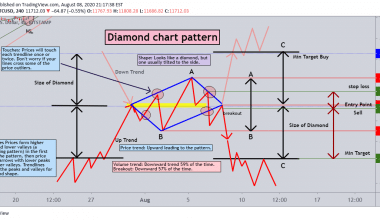Both novice and experienced investors can benefit from investing in the stock market through a low-cost index fund. Index funds can lower your risks when compared to investing in individual equities, and they’re also a good option if you want to reduce the time and money you spend investing. Nevertheless, index funds can provide good returns by lowering fees. Here is further information about index funds as well as a list of some of the low-cost index funds S&P 500 currently available on the market, including Vanguard and Fidelity.
What are Low-Cost Index Funds?
An index fund is an investment fund that tracks a specific collection of assets called an index. The index may contain stocks, bonds, and other assets, such as gold. The Standard & Poor’s 500 index (S&P 500) is the most well-known index, and it contains around 500 of the top publicly traded American corporations. The Nasdaq Composite, Dow Jones Industrial Average, and Russell 2000 are other popular indexes.
A passive investment called an index fund mimics the performance of an index. The index fund does not make any active market investments. Instead, it simply attempts to mirror the index’s performance by holding the same assets in the same proportions. Either an exchange-traded fund (ETF) or a mutual fund can be used to buy and sell an index fund.
Choosing Low-Cost Index Funds
Low-cost index funds fall into several categories. You may select the best low-cost index fund by understanding these several types:
- Total U.S. Stock Market Funds: Investing in total U.S. Stock Market Funds, which track indexes that include all publicly traded U.S. companies, is an excellent option for ultra-minimalist investors seeking wide exposure to the U.S. stock market.
- S&P 500 index funds: Funds that mirror the S&P 500 index offer one of the simplest methods to acquire diversified exposure to the largest U.S. corporations.
- Index funds by market segment: Another option to arrange your low-cost index fund portfolio is to invest in ETFs by market section. Index funds that focus on large-cap, mid-cap, or small-cap companies might help you adapt your portfolio to your risk tolerance.
You can also diversify your portfolio by investing in multiple of these low-cost index funds.
Low-Cost Index Funds S&P 500
The S&P 500 is one of the most widely followed indexes in the world, and it is tracked by several low-cost index funds. The returns of these funds will be roughly the same over time, like that of a McDonald’s hamburger, therefore, the important differential is each fund’s expense ratio.
These are a few examples of low-cost index funds that follow the S&P 500:
- Fidelity 500 Index Fund (FXAIX) – Expense Ratio: 0.015
- Fidelity ZERO Large Cap Index (FNILX) – Expense Ratio: 0%
- iShares Core S&P 500 ETF (IVV) – 0.03 percent expense ratio
- Schwab S&P 500 Index Fund (SWPPX) – 0.02 percent expense ratio
- SPDR S&P 500 ETF Trust (SPY) – 0.09 percent expense ratio
- State Street S&P 500 Index Fund Class N (SVSPX) – 0.16 percent expense ratio
- T. Rowe Price Equity Index 500 Fund (PREIX) – Expense ratio: 0.16 percent
- Vanguard 500 Index Admiral Shares (VFIAX) – 0.04 percent expense ratio
- Vanguard S&P 500 ETF (VOO) – 0.03 percent expense ratio
It’s also important to note that many other funds are “closet trackers,” which means they don’t technically track an index but do so in practice because of what they own. Many of these funds charge significantly higher fees than the low-cost funds mentioned above and may not deliver the same high level of performance.
Low-Cost Index Funds Fidelity
It’s not simple to cut this universe down to just seven of the top low-cost index funds from Fidelity. This is not an exhaustive portfolio. For the novice investor, however, this combination of Fidelity index funds covers the essentials, providing exposure to US stocks, developed and emerging markets, and government and corporate bonds—everything you need to build a basic starter portfolio.
Several Fidelity index mutual funds, including those listed below, provide a good mix of historical performance and moderate cost.
#1. Fidelity 500 Index Fund (FXAIX)
The Fidelity 500 Index Fund (FXAIX) is not only one of the largest mutual funds tracking the Standard & Poor’s (S&P) 500 Index, with $366 billion in AUM as of Q2 2022, but also one of the cheapest. With a net expense ratio of around 0.015%, this product is one of the least expensive investments in the mutual fund world.
#2. Fidelity NASDAQ Composite Index Fund (FNCMX)
Low cost can often be a relative concept. The Fidelity NASDAQ Composite Index Fund (FNCMX) still has one of the lowest expense ratios among funds tracking the NASDAQ Composite Index. This $11 billion fund is also the only one with a five-star Morningstar rating in the large-cap growth category.
#3. Fidelity ZERO International Index Fund (FZILX)
Due to the increased cost of elements such as worldwide research and currency risk, international mutual funds typically have higher expense ratios. Since 1997, Fidelity has charged a modest fee of 0.20% on its Spartan International fund. With its ZERO International Index Fund, Fidelity has just shifted to a zero-fee approach (FZILX). This $3 billion fund focuses on larger global companies to decrease risk and has no expense ratio or load.
#4. Fidelity Mid Cap Stock Fund (FMCSX)
With some of its funds earning five stars from Morningstar, Fidelity has a particularly strong range of mid-cap funds to choose from. One of these is the Fidelity Spartan Mid Cap Stock Fund (FMCSX). It is one of Fidelity’s more expensive mutual funds, with an expense ratio of 0.83%, but it is also one of the best ways to obtain exposure to medium-sized stocks, with professional active management that has generated an additional percent of return annually against its benchmark over the previous 15 years.
#5. Fidelity Estate Investment Portfolio (FRESX)
Real estate might be a famously risky investment, but the diversification benefits of including this asset type in a portfolio are significant. The Fidelity Real Estate Investment Fund (FSRVX) actively invests at least 80% of its assets in securities of domestic and overseas corporations primarily engaged in the real estate industry, as well as other real estate-related investments. The fund has $5.6 billion in assets and a 0.73% cost ratio.
#6. Fidelity Inflation-Protected Bond Index Fund (FIPDX)
Treasury inflation-protected securities (TIPS) are a relatively new addition to the investing scene, but they have piqued the curiosity of investors looking for economic risk protection. Due to the current low-rate, low-inflation environment, the $11.5 billion Fidelity Inflation-Protected Bond Index Fund (FIPDX) has not provided much in the way of returns to investors, but it boasts a four-star Morningstar rating and a 0.05% net expense ratio.
#7. Fidelity ZERO Total Market Index Fund (FZROX)
The Fidelity ZERO Total Market Index Fund (FZROX) is similar to the Fidelity ZERO 500 Index Funds in that it adds small-cap and mid-cap exposure to the mix to represent the entire U.S. equity market. It is an excellent core “all-in-one” portfolio investment with no fees or burdens. The $12 billion FZROX charges no loads and has a 0% expense ratio; yet, Morningstar only gives it three stars.
Read Also: 15 INDEX FUNDS TO INVEST IN Right Now!!! (Updated)
Low-Cost Index Funds Vanguard
Index funds from Vanguard are among the market’s most fervent supporters of low-cost investing. The Vanguard 500 Index Fund, which provided low-cost access to the Standard & Poor’s 500-stock index, was the first index fund created by the corporation more than four decades ago.
Vanguard has since created a series of low-cost index mutual funds and exchange-traded funds (ETFs), saving investors hundreds of billions of dollars in fees. Yet, the top Vanguard index funds will do more than just help you save money on fees. They will also provide consistent exposure to asset classes and investment techniques from which to profit for years to come. Take a peek.
#1. Vanguard Total Stock Market Index Fund ETF
The Vanguard Total Stock Market Index Fund ETF is your best option if you wish to hold a single index fund ETF that invests in the complete U.S. stock market in the appropriate proportions. Owning shares in this fund eliminates the need to purchase other stocks or ETFs unless you want to concentrate your portfolio’s exposure in a certain market category.
#2. Vanguard S&P 500 ETF
The Vanguard S&P 500 ETF tracks the S&P 500 (SNP INDEX: GSPC), a market capitalization-weighted index that comprises 500 of the top U.S. firms. The fund’s substantial diversification appeals to many investors.
The S&P 500 is “self-cleansing,” which means that when a firm no longer meets the criteria for inclusion, it is removed from the index and replaced by a rising company that deserves to be there. The formulaic nature of the inclusion procedure assures that only high-quality companies are listed by the S&P and invested in by the Vanguard S&P 500 ETF.
#3. Vanguard Mid-Cap ETF
The Vanguard Mid-Cap ETF invests in firms with market capitalizations ranging from $2 billion to $10 billion. Companies in the mid-cap market group have established operations and consistent revenue streams, but many have yet to reach their full potential.
The ETF attempts to hold the same stocks and in the same proportion as the CRSP U.S. Mid-Cap Index. The fund’s low expense ratio of 0.04% is comparable to that of other mid-cap ETFs.
#4. Vanguard Small-Cap ETF
If you want to invest in firms with the most growth potential, the Vanguard Small-Cap ETF is a good choice. This fund tracks the CRSP U.S. Small-Cap Index, which focuses on companies in the bottom 2% to 15% of their market capitalization that are based in the United States.
Investing in a low-cost, small-cap index fund ETF, like the Vanguard Small-Cap ETF, can help you achieve higher total returns. However, because of its focus on small-cap stocks, the performance of this ETF may be more volatile than that of other assets.
How to Invest in Low-Cost Index Funds
Index funds are extremely popular due to their ease of use. Simply choose the index you wish to track, locate a fund that tracks it, and place your purchase.
#1. Choose an index to monitor.
The hardest part of investing in index funds is undoubtedly choosing an index to track. There are more than three million market indexes worldwide, according to the Index Industry Association. Indexes can be based on market capitalization, such as the S&P 500, or small-cap stocks, such as the Russell 2000.
#2. Choose an index fund.
“Investors should search for the lowest-cost choice that most closely reflects the benchmark when comparing funds that track the same index,” adds O’Reilly. “Expenses will generally be a major driver of how closely the fund’s performance approaches the benchmark.” A fund with a lower expense ratio will track the return of the benchmark index more closely because expenses are deducted from your returns.
All that remains is to submit an order once you’ve decided on the fund you want to buy. If you’re purchasing an index ETF, you must decide how many shares of the fund you want to acquire. You must then determine whether you want to place a market order or a limit order.
Can I buy index funds with $100?
Yes. It can be an excellent method to begin investing with less than $100.
What is the average cost of an index fund?
On an asset-weighted basis, the average stock index mutual fund cost 0.06 percent or $6 for every $10,000 invested. For every $10,000 invested, the typical stock index ETF charged 0.16 percent (asset-weighted), or $16.
What is a low-cost S&P 500 index fund?
Fidelity 500 Index Fund (FXAIX) FXAIX is a mutual fund. Because index-tracking funds track the performance of the index, one of the most important factors determining long-term returns is the number of fees charged.
What is a low-cost index fund in the UK?
- FTSE 100.
- iShares 100 UK Equity Index Fund. 0.06%
- FTSE 250.
- Vanguard FTSE 250 UCITS ETF. 0.10%
- FTSE All-Share Index.
- Vanguard FTSE UK All Share Index Unit
What is an example of a low-cost index fund?
- Fidelity 500 Index Fund (FXAIX) – Expense ratio: 0.015 percent.
- Fidelity ZERO Large Cap Index (FNILX) – Expense ratio: 0 percent.
- iShares Core S&P 500 ETF (IVV) – Expense ratio: 0.03 percent.
- Schwab S&P 500 Index Fund (SWPPX) – Expense ratio: 0.02 percent.
How do low-cost index funds work?
A passive investment called an index fund mimics the performance of an index. The index fund does not make any active market investments. Instead, it simply attempts to mirror the index’s performance by holding the same assets in the same amounts.
Can you withdraw from index funds?
Yes, you can withdraw from an index fund at any time.
Can index funds make you money?
Yes. The money saved in fees by investing in an index fund rather than a mutual fund can add up over time, allowing you to increase your income.
Conclusion
As you can see, the cost is the primary distinction between index funds that track the same index. That’s why experts advise investors to look at the cost of funds when comparing funds based on well-known indexes like the S&P 500. A charge that does not go into the fund manager’s pocket is money that can multiply for you over time.
Related Articles
HOW TO INVEST IN S&P 500: Baby Step The most Popular Options In 2023 (Updated)
MARKET INTELLIGENCE: Definition, Tools & Difference
33+ LOW-COST BUSINESSES TO START UP IN 2023
IS BITCOIN A GOOD INVESTMENT in 2023? What You Should Know






